There are a lot of different marketing techniques out there, and it can be tough to know which ones will work best for you.
But if your traditional funnel is not working as well as you want, it might be time to switch things up and try a flywheel approach.
A flywheel is a system where the momentum generated by one action helps to keep the wheel spinning. While this concept is not novel, it has been gaining popularity in recent years as a way to power businesses.
In this article, we will share 5 marketing techniques that turn your funnel into a flywheel.
Let’s get started.
Why Your Funnel Might Be Broken
Understanding the sales funnel is essential for any business owner or marketer.
It provides a way to get cold traffic in the door, nurture them until they are ready to buy, and close the deal.
But what happens when your funnel is not working? It could be that you are not getting enough traffic at the top of the funnel. There are several reasons why your funnel might be broken.
It could also be that you are not retaining customers or generating repeat business. Or maybe your conversion rates are low. Whatever the reason, if your funnel is not working, it is time to make a change.
Why Go With A Flywheel?
Originally defined by Hubspot, a flywheel is a suitable model for various businesses that starts with understanding what a flywheel is.
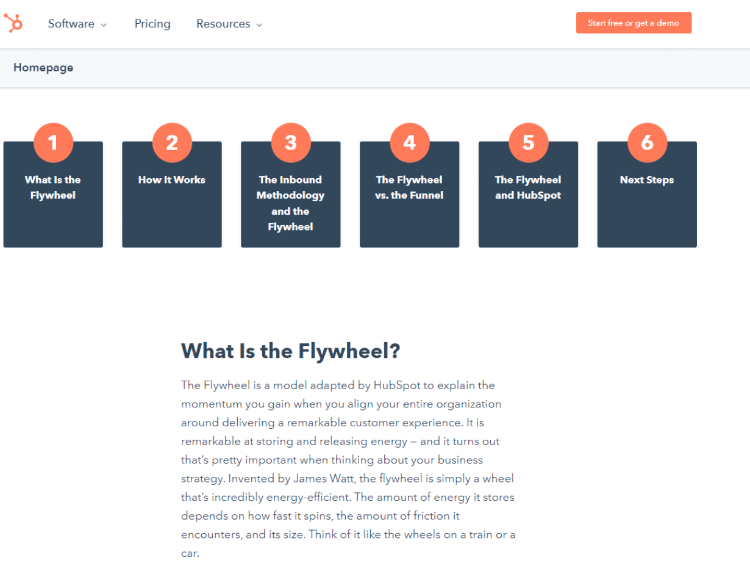
Essentially, a flywheel is a system that keeps the momentum going by continuously spinning and generating energy.
This concept has been used in various industries for hundreds of years, from powering trains to speeding up treadmills.
But it is only recently that people have started to apply this idea to business. And there are several reasons why this approach can be efficient for marketers and entrepreneurs today.
First, it allows you to get more traffic into your funnel without doing as much work each time. Second, it generates repeat business and increases customer retention through loyalty programs and other incentives. And finally, it helps you stand out from the competition by creating a unique customer experience.
Finding your friction points is key to building a powerful flywheel for your business. As friction is the number one enemy of momentum, it is essential to identify the areas where your efforts are slowing you down and remove them.
Components Of A Marketing Flywheel
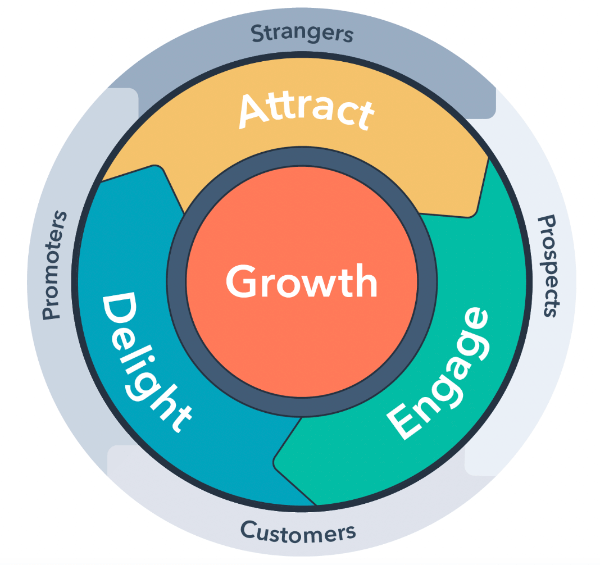
The idea behind a marketing flywheel is that we have strangers we want to turn to into prospects, customers, and promoters on the outer layer.
This sequence of events is typical to all businesses, whether they use a flywheel or a traditional funnel approach.
The critical difference is what happens in between each stage.
With a funnel, you are constantly working to bring in new strangers and turn them into prospects.
But with a flywheel, the momentum you generate at each stage helps keep the wheel spinning.
This means that you can focus your efforts on creating loyalty and repeat business, eventually leading to more customers and more promoters.
All of this can be done by:
Attracting
Engaging
Delighting customers
These three steps are the core components of any successful marketing flywheel.
By focusing on delivering a high-quality customer experience across all channels and using incentives to keep customers engaged, you can create a powerful flywheel that provides results for your business.
As a result of a strategy that brings all of this together, you will end up with growth, which is central to any successful business. Whether you are a small startup or a well-established company, flywheels can help you power your business forward and reach new heights.
Techniques To Turn Your Funnel Into A Flywheel
Let’s now look at the various techniques to incorporate in any successful business that uses a flywheel model.
#1: Identifying Your Friction Points
The first actionable step you can take to build a powerful flywheel for your business is to identify your friction points.
You first need to look at the different stages of your sales funnel, from the point of contact up to generating repeat business. In each stage, determine where customers are losing momentum.
For example, maybe you are getting traffic into the top of your funnel that is not converting well because people are bouncing off your landing page. Or perhaps you are failing to convert leads once they get on your email list due to disorganized follow-up or lack of helpful content. Or maybe, it is failing to retain customers or generate loyalty through incentives such as discounts or special offers.
Once you have identified your friction points, the next step is to take action and remove them.
In some cases, this might mean changing your website or landing page. If so, various landing page growth hacks can help you improve conversions in this area.
#2: Put The Customer First
The second step to building a powerful flywheel is always to put the customer first. This means delivering a high-quality customer experience across all channels.
Building a system around your customer's experience is key to success. By understanding their needs and wants, you can create a system that gives them what they need at every stage of their journey.
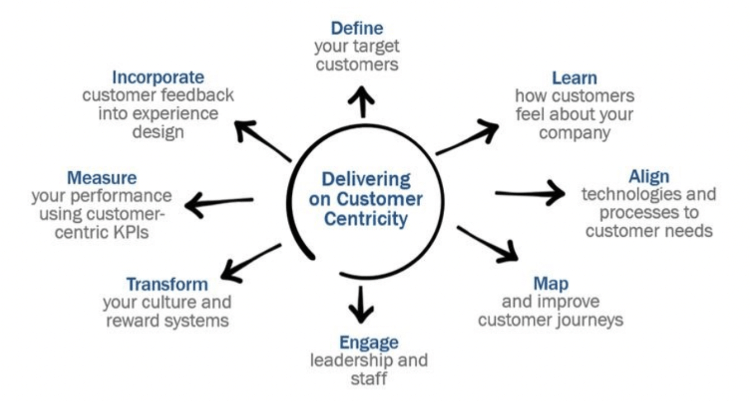
This begins with attracting the right customer in the first place. This also means having a well-optimized website and social media presence that speaks to your target audience. Once you have their attention, you need to engage them with helpful content and valuable offers.
It’s worth repeating that the goal is to keep them moving through your flywheel by providing an enjoyable experience that meets their needs.
Helping the customer at every opportunity will eventually lead to success in achieving your business goals.
#3: Building Momentum
The next step in building a powerful flywheel for your business is generating momentum. One can do this in several ways, but one of the most effective is by using content marketing.
Content marketing is about creating valuable, relevant, and consistent content that attracts and retains customers. By creating a steady stream of high-quality content, you can build momentum and accelerate customer acquisition.
But it is not just about attracting new customers; it is also about keeping your existing customers interested. Companies can do this by using drip campaigns to regularly send emails with relevant content or offer incentives for them to come back to your site and make another purchase.
You can even use a marketing strategy generator to build a plan for generating momentum and accelerating your flywheel.
#4: Spinning The Wheel Fast
The more you can get your flywheel spinning, the more momentum you will generate and the more growth you will see for your business.
One way to keep the flywheel spinning is by using paid advertising to drive traffic into your funnel. Paid advertising can be a great way to jumpstart your flywheel and get it spinning quickly.
Another way to keep the flywheel spinning is through word-of-mouth marketing. This is when customers tell their friends and family about your product or service, and they, in turn, tell their friends and family, creating a snowball effect that can help you attract new customers and grow your business quickly.
Finally, you can also use social media to keep the flywheel spinning. By sharing your content on social media and engaging with your followers, you can generate buzz and momentum quickly.
#5: Focus On Word Of Mouth
It should be clear that generating word of mouth is a great way to find success with a flywheel.
Identifying happy customers that are likely to refer your business to others is a great way to generate word of mouth. You can do this by surveying customers or using social media monitoring tools to identify customers talking about your brand positively.
To create even more happy customers, you can use referral programs to incentivize customers to refer your business to their friends and family. This helps ensure that customers are more likely to recommend your company when they have something to gain from doing so.
Which Departments Can Use A Flywheel Approach?
Virtually all departments within a company can benefit from implementing a flywheel approach.
For example, marketing teams can use content marketing and paid advertising to attract new customers and engage existing ones. In contrast, sales teams can focus on building relationships with clients and finding ways to retain them over the long term.
Customer service teams can also use this approach by providing excellent support and addressing customer concerns quickly and effectively to satisfy customers.
Product development teams can continuously improve their offerings based on feedback from both customers and sales reps to ensure that they deliver exactly what their customers need.
Your service department can also use a flywheel approach by listening to customer feedback and improving the quality of your products or services over time.
With the right strategy in place, virtually every department within a company can benefit from using a flywheel approach.
The Flywheel In Action
Amazon uses the concept of a flywheel to explain how they grow their businesses. The idea is that there are four parts to their flywheel:
Customer Experience
Traffic
Selection
Sellers
Starting with the customer experience, all Amazon employees focus on creating a great customer experience. This is because excellent customer experience is the key to driving traffic. Traffic is then directed to the Amazon marketplace, where sellers can offer a wide selection of products. Finally, customers buy products from sellers on Amazon, completing the flywheel.
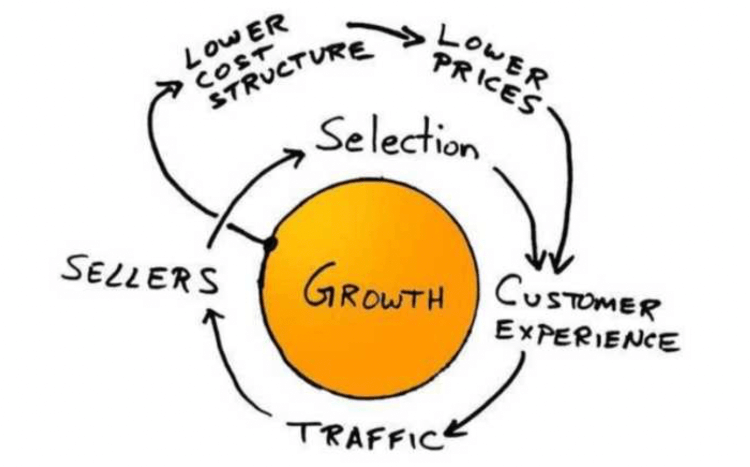
How Industries Can Use A Marketing Flywheel
In addition to various departments being able to use a flywheel to find success, this marketing concept can also be applied to various industries. Let’s have a look at some of them.
An eCommerce store could use content marketing, paid advertising, and social media to drive traffic into their funnel, generate interest in their products or services, and increase sales over time. All of this could be happening while decreasing any friction that stops people from buying.
In the healthcare industry, companies can focus on providing high-quality care for patients while also tracking patient satisfaction rates to improve the quality of their offerings over time.
A business that runs CRM Software with text messaging capabilities could use their software to send drip emails to customers and encourage them to return to their site or make another purchase.
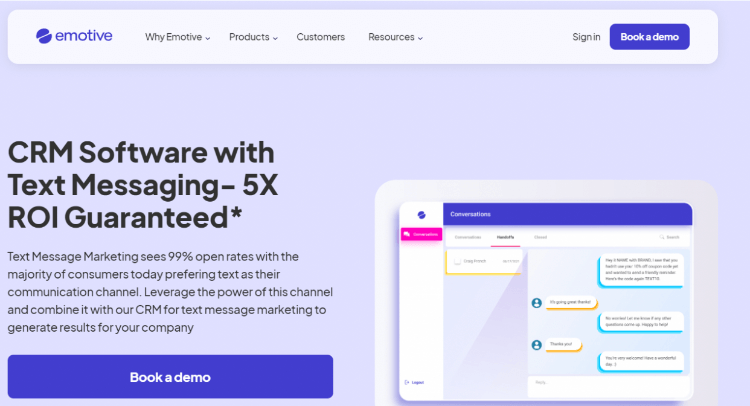
To delight their customers and spin the flywheel even faster, such a business could also offer various discounts and incentives to customers engaged with their service, resulting in even more momentum.
An email marketing software company can use a marketing flywheel approach to accelerate its growth. By continuously improving their software and providing excellent support and customer service, they can increase engagement rates and generate more leads.
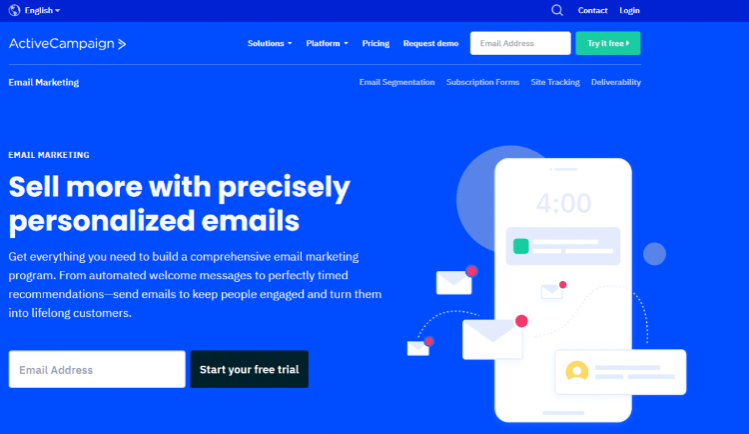
Also, sending different types of emails to customers based on their position in the flywheel (including educational emails, promotional emails, etc.) can help keep them engaged with its offerings.
A company that deals in accounting software and traditionally offers an invoice template as part of its service could implement the flywheel concept by systematically improving its software and differentiating itself from competitors to attract more customers.
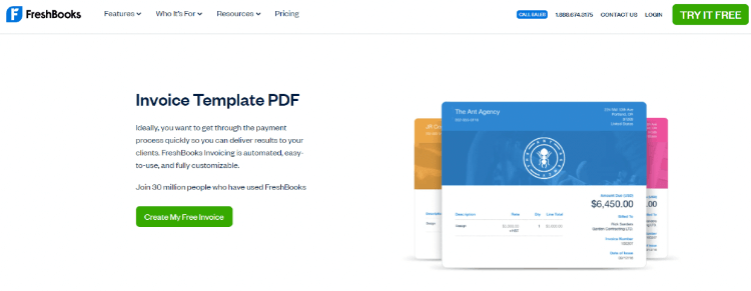
Such a company could see how to delight its customers more by providing a more comprehensive range of features, templates, and expert support to help them get the most out of the software.
Finally, suppose someone decides to start their own business and goes with one of the best self-employed jobs at the moment. Even this type of person can use the marketing flywheel concept.
This person can focus on creating high-quality content that resonates with their target audience and fills in the niched needs that bigger companies are missing. At the same time, the self-employed person can provide their audience with the right type of value to move potential customers through the flywheel.
How To Make Your Marketing Funnel Better
Let’s say that you’re still on the fence about changing from a funnel into a flywheel.
The good news is that you don't necessarily have to change from a funnel to a flywheel just yet.
Even if you’re happy with your current marketing funnel, but you want to improve it, there are a few lessons you can take from a flywheel to ensure that your funnel is as effective as possible.
Mapping Your Go-To-Market Strategy
The first step toward improving your marketing funnel is to create a clear and detailed map of your go-to-market strategy. This will allow you to identify all the components that play into your current funnel, including customer acquisition channels, lead generation activities, conversion steps, etc. Once you have this information mapped out, you can begin identifying areas for improvement and making changes to your funnel accordingly.
Measuring Current Success
To improve your marketing funnel, you first need to understand how it is currently performing. This means measuring various metrics such as website traffic, conversion rates, leads generated, etc. Once you know your most prosperous areas, you can begin to identify areas where you can improve, such as focusing on content marketing, optimizing your website for search engines, or investing in paid advertising.
Identify Friction And Reduce It
Another critical factor in improving your marketing funnel is identifying any sources of friction that may be slowing down the customer journey or causing customers to drop off at specific steps. Examples of friction points could include a long and complicated checkout process, an ineffective lead capture form, or a lack of customer support. Once you have identified these friction points, you can work on reducing or eliminating them to help improve the overall efficiency of your funnel.
Automate Repeatable Tasks
Making your marketing funnel more efficient by automating any repeatable tasks is always a good idea. This could include automating processes like email marketing, social media management, or content creation and promotion. Automating these tasks will help you save time and resources, allowing you to focus on other areas of your funnel that require more attention.
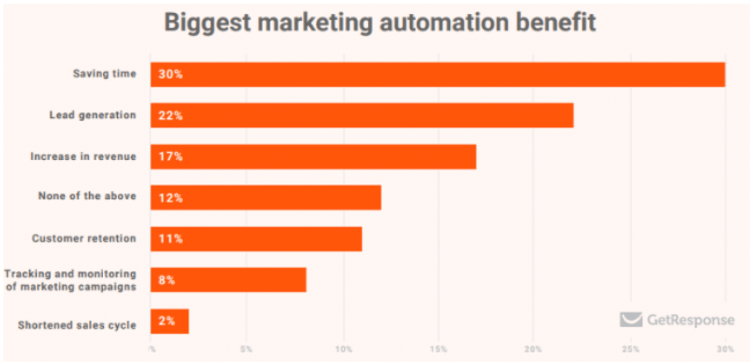
Practically speaking, suppose you have built a social media marketing funnel that involves repeatable audience-building and relationship management tasks. In that case, you may want to explore tools that can automate some of these tasks.
Restructure Teams
Finally, if you are experiencing significant inefficiencies or challenges within your marketing funnel, another option is to restructure the teams responsible for managing it.
This could involve bringing on new staff members, creating new roles and responsibilities, or working with outside agencies or consultants to get the help you need to improve your funnel performance and drive more sales. With the right team in place, you can quickly and effectively improve your marketing funnel and boost your business growth.
What To Do Next
While shifting from a funnel to a flywheel model may not be suitable for every business, there are many ways that you can improve your current funnel to help drive more sales and attract more customers.
Whether you focus on mapping out your go-to-market strategy, measuring your success rates, or restructuring your teams, stay focused on improving and optimizing your marketing funnel until it becomes a well-oiled machine. With the right approach, you can turn your funnel into a flywheel (or borrow components from the latter) that generates sustainable growth for your business.
Conclusion
At its core, using a flywheel approach is all about creating momentum and driving growth for your business over the long term.
Ultimately, the key to building a powerful flywheel for your business is to focus on generating momentum through consistent effort and quality work. Delighting and engaging your customers while also working on improving and optimizing every aspect of your funnel are the best ways to help it reach its full potential.
About Author
Adam Steele has been writing about digital marketing and SEO for 11 years. He’s consulted for businesses small and large, including several of the largest companies in the world. If you liked this post, follow him on Twitter for more like it.





